Quick announcement: Walking an Ancient Path is available in both blog and podcast formats. The blog has been hosted on the ancientfaith.com website for almost five years now, but Ancient Faith Ministries will shut down its entire blog platform on October 1st. I will continue the blog by migrating it over to a Facebook business page. I have a very short time to figure all that out, but I hope to have it up and running by the end of the month. Unfortunately . . . Facebook. I’ve made a point of avoiding social media, but this is probably the easiest, and most easily accessible, way to continue the blog. So, search for Walking an Ancient Path there, and spread the word to anyone you think would benefit from the content, especially if they prefer reading to listening. An added bonus to the blog: I often feature my hubby Rob’s beautiful photography there.
And now, back to our regularly scheduled programming.
***
Yesterday I received a marketing letter from a local funeral home, and I’m wondering if this is going to be a regular thing. Do they know how old I am?

It’s like when I used to be on Facebook, and my feed would include ads about weight loss and moisturizers. Accurate. And also slightly offensive. How do they know?
The funeral ad was unusual in the context of all the advertising that assaults us daily. An alien watching television would conclude from the commercials that Americans don’t die. They do, however, get old, fat, and sick, and they spend lots of money on products designed to delay aging, lose weight, and get healthy. Denial of death is big business.
Yet it’s interesting to me that for all the energy we put into thinking about, caring for, and tinkering with our physical bodies here in the West, we put very little thought into the meaning of the human body. Are our bodies important? Does our personhood require a body? Or is my body simply a vehicle that allows the real me—the person inside the fleshly shell—to get around and do things?
My Body, My Self
The messages from the world say that our bodies are important, with a strong emphasis on physical attractiveness and health. And, of course, the really worthwhile bodies in the worldly mindset are young, unblemished, strong, and shapely. Magazines, movies, and TV shows celebrate attractive bodies, and in pornography the human body is valued completely apart from the entire person. People spend billions of dollars on cosmetics, plastic surgery, and drugs to maintain youthful and vigor. I’m speaking in really vague terms here, and won’t belabor this point, because I know of several families who listen to this podcast together. The details aren’t necessary. We all live, work, and study in this superficial, carnal world. You get the picture.
The heterodox Christian world tells us our bodies are important, too, and usually—hopefully—with less emphasis on the superficial. A favorite verse on this topic is 1 Corinthians 6:19: “Do you not know that your body is the temple of the Holy Spirit who is in you, whom you have from God, and you are not your own?” This passage and others, such as Psalm 139, in which King David describes our bodies as being “fearfully and wonderfully made” (v. 14), generally result in a positive emphasis on health among Protestants. They understand that one of the benefits of good health is the ability to use our bodies in service to God and to others.
As Metropolitan Kallistos Ware explains in his little book The Power of the Name: The Jesus Prayer in Orthodox Spirituality,
A human being, in the biblical view, is a psychosomatic totality—not a soul imprisoned in a body and seeking to escape, but an integral unity of the two. The body is not just an obstacle to be overcome, a lump of matter to be ignored, but it has a positive part to play in the spiritual life and it is endowed with energies that can be harnessed for the work of prayer. (Kindle edition, Loc. 465)
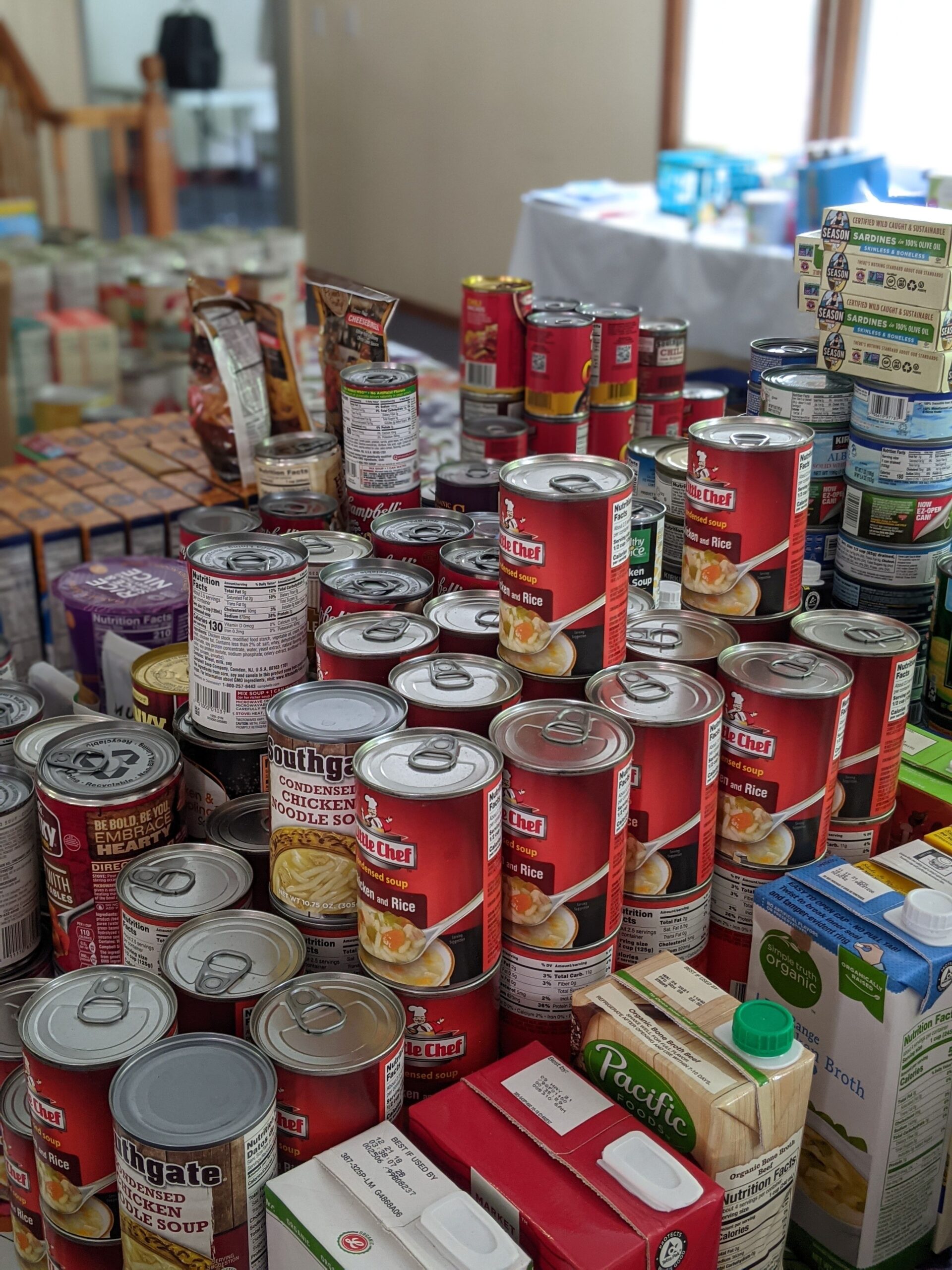
This emphasis on the body as a tool for service is definitely absent from the secular obsession with physical attractiveness and strength. Mother Ann Lee, founder of the 19th-century religious sect the Shakers, is famous for the saying, “Put your hands to work and give your hearts to God.” Bishop Theophan, in The Art of Prayer, wrote something similar: “The hands at work, the mind and heart with God” (p. 92). But I don’t think I’ll ever see a Peloton commercial with the message, “Wow, your body is so toned and fit, just imagine how many crates of applesauce you could load for a food bank!”
But what about the value of the human body in death? Here, oddly enough, the atheistic and heterodox Christian views seem to converge. Protestant Christians emphasize the soul’s eternal destiny, but many believers and nonbelievers both see the body itself almost as an afterthought. After death it’s not useful anymore, and its deposition is completely a matter of personal choice.
Also in the West, Christians and nonbelievers alike tend to separate the parts of a human being into categories: body, mind, and spirit. People will talk about “the real me” as something on the inside, as if the body is a different thing and merely a house for the self. I think this largely explains the Western Christian laissez-faire attitude about types of funeral services and burial versus cremation: The spirit is the important part of the person, not the body.
But the Orthodox Church does not recognize this separation between soul and body. As Fr. Andrew Stephen Damick has noted in the Lord of Spirits podcast, we are “ensouled bodies” or “embodied souls.” Soul and body are a package deal. This understanding is very important when we think about end-of-life decisions and the Church’s care of the human body after death. In fact, the Orthodox Church’s opposition to cremation is directly related to her understanding of the sacredness and value of the human body. The body’s sanctity does not end with death.
Believers know the teaching from Genesis that we are created in God’s image (Gen. 1:26), which makes humanity special and beloved. In addition, some specific truths undergird the Orthodox Church’s care of the human body after death.
Three Reasons Our Bodies Are Sacred
1. God formed man as both soul and body at Creation.
Most of us are familiar with the Creation story, including Genesis 2:7: “And the Lord God formed man of the dust of the ground, and breathed into his nostrils the breath of life; and man became a living being.”
In his article “The Human Body: Ascesis and Exercise,” Metropolitan Heirotheos of Nafpaktos and Agiou Vlasiou writes,
It is clear that man was directly created by God in a positive way. This means that . . . the body is not the prison of the soul, but was formed by God at that moment, and man was formed in this way in a unity of soul and body. That is to say, the body did not exist before the soul, and the soul did not exist before the body. Man is not simply a soul or simply a body. The soul is the soul of a human person and the body is the body of a human person; i.e., man is always both, because he consists of both soul and body.
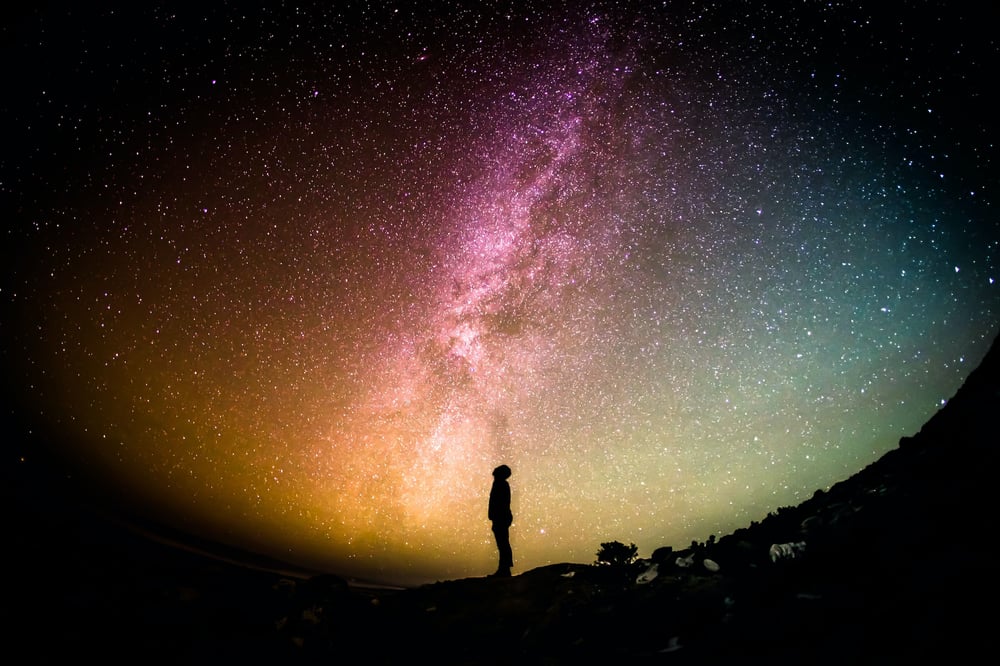
I don’t think I had ever realized this before reading His Eminence’s words. I think the whole Western mind-body-spirit separation has been deeply ingrained in me. The Platonic and Mormon ideas of the preexistence of souls is not biblical, and certainly not Orthodox. Body and soul remain a package deal. The website of the Diocese of Sourozh, Patriarchate of Moscow, Russian Orthodox Church in Great Britain and Ireland, expands on this idea:
The Church Fathers, basing themselves on Scripture, teach that the soul and the body are not foreign elements united temporarily in the individual, but are bestowed simultaneously and for all time in the very act of creation: the soul is “betrothed” to the body and is inseparable from it. Only the totality of soul and body together comprises a complete personality, a hypostasis. Saint Gregory of Nyssa calls the unbreakable link between soul and body an “inclination of affection,” “commixture,” “’community.” “’attraction,” and “acquaintance” which are preserved even after death.
2. The Holy Spirit’s indwelling in Christian bodies does not end with death.

Once again, our bodies are temples of the Holy Spirit (1 Cor.6:19). The Holy Spirit sanctifies our bodies, and the decay of death does not change this reality. Father Patrick Henry Reardon, archpriest of All Saints’ Orthodox Church in Chicago, explains in an article,
With respect to the indwelling Holy Spirit, there is no difference between the bodies of Christians before and after death; whether before or after death, the Christian body is also to receive the same veneration; and notwithstanding the physical corruptions that the body endures by reason of death, there remains a strict continuity between the body in which the Christian dies and the body in which the Christian will rise again. That is to say, it is the very same reality that is sown in corruption and will be raised in incorruption.
That’s a little difficult for me to wrap my head around. When I thought about bodily resurrection in the past, I didn’t really think about this body—my body, the one typing on my laptop right now—participating in the resurrection. But that reality alone should inform our treatment of the dead.
3. Our bodies participate in the sacraments, especially the Eucharist.
In receiving the Eucharist, we mystically partake of the Body and Blood of Christ. The elements enter our bodies, sanctifying and transforming us both physically and spiritually. This understanding is naturally absent from non-sacramental churches, which are not bound by, nor really all that interested in, Church history and Holy Tradition. This de-emphasis on the sacraments offers an important explanation for the rapid acceptance of cremation in the Protestant world. I have never once heard any debate about it. In life and in death, the sacraments—defined only as baptism and communion—were irrelevant in my religious past. They had no effect on the body and were not even considered in terms of care of the dead.
This makes sense logically. If baptism and communion are simply symbolic acts with no actual salvific effect, they do not have any sanctifying power. In the Protestant world, the idea is unknown that a Christian could be so united to Christ that his or her very body is filled with God’s power, leaving behind relics that stream myrrh, do not decay, and bring healing to the living. So what does it matter what we do with the body after death?
The Orthodox Church, however, understands that even cloths that are stained with wine from the Eucharist contain the Blood of Christ. They are carefully washed by hand, with the washing water poured into a garden or patch of grass rather than down the sewer. How much more valuable is a human body that has received the Eucharist! It is not to be burned like trash or otherwise discarded thoughtlessly.
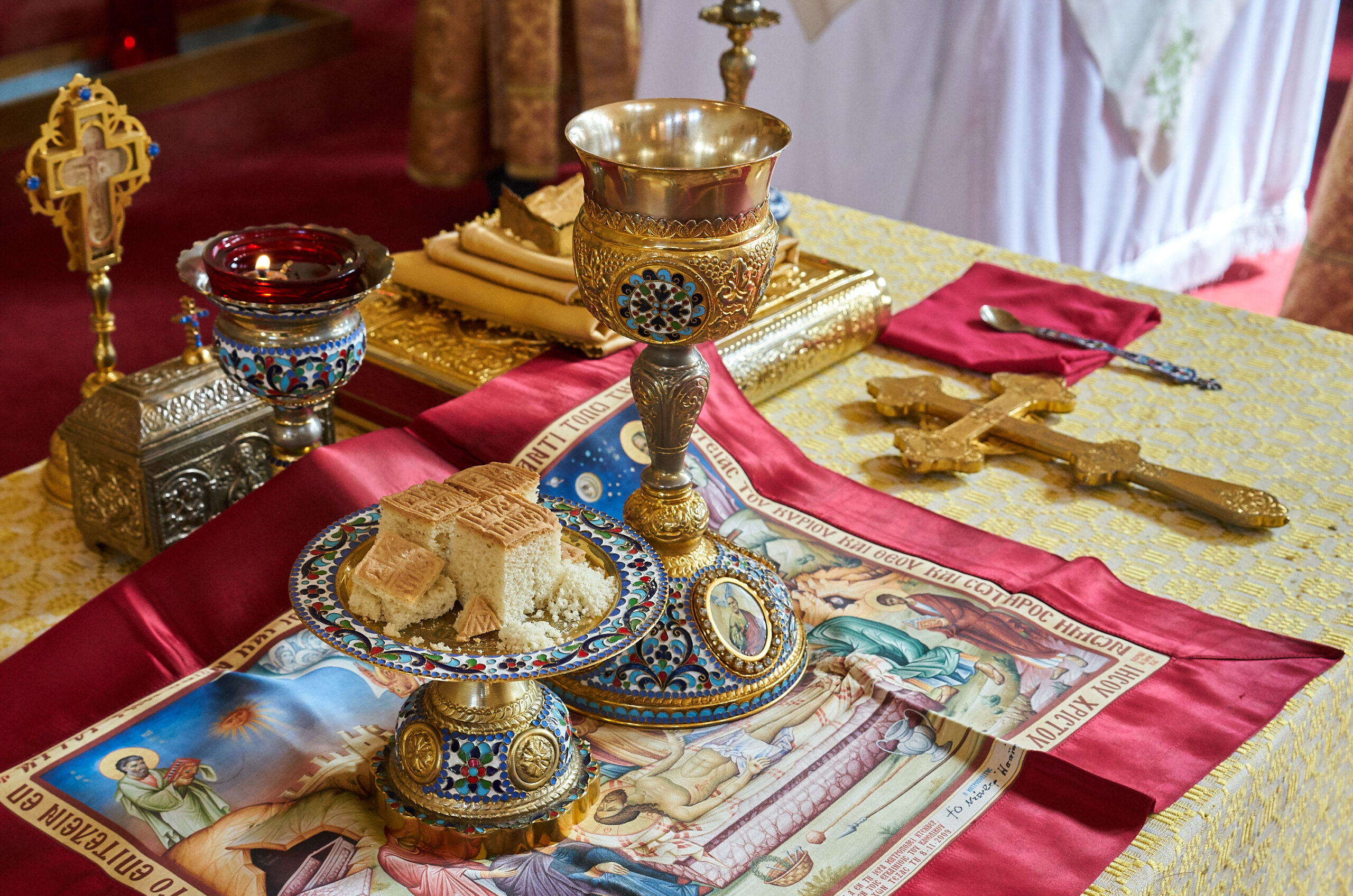
The Church has always understood these truths about the value of the human body. In ancient Rome, the burning of bodies on funeral pyres was a common pagan practice. But Christians went to great lengths to gather the remains of those who had been tortured and martyred for Christ, and they gave those remains—the relics of the saints—reverent burial. As just one example, Martyr Nicander of Egypt in the late 3rd century buried the bodies of Christians who had been martyred under the rule of Emperor Diocletian. He argued that, as St. Paul taught, the body is the temple of the Lord. Thus he equated cremation with the burning of churches.
Wow. That’s a powerful new idea to me, even though it’s a very old idea. As I mentioned in the previous episode, “Remembrance of Death & Celebrations of Life,” Christians of all stripes were once united on the proper care of a believer’s body after death.
From Scandal to Acceptance: The Triumph of Cremation in Only 150 Years
Native peoples in the Americas used funeral pyres for centuries in their ritual practices for the dead, but the first modern cremation in the US occurred on December 6, 1876. The body of the deceased was named Baron de Palm, a member of the Theosophical Society, and his funeral in New York was described by one journalist as “another exemplification of the wickedness of the metropolis.” A reporter from the Philadelphia Times who witnessed the cremation wrote, “If [de Palm] could have foreshadowed the startling scenes his poor bones would have to go through he would have thought twice before he jumped into the fire.”
The condemnation of this first modern cremation was widespread and nearly universal among the secular press, because during the late 1800s, American views of death and burial were still largely Christian. For an entertaining and informative treatment of the Baron de Palm’s historic cremation, I highly recommend the YouTube video “America’s First Cremation Was WILD” on the channel Ask a Mortician, hosted by Caitlin Doughty.
Cremation is now an extremely common process; in 2015 in America, cremation officially overtook burial as the top choice for the deposition of a body, and according to the National Funeral Directors Association, by 2035 nearly 80% of Americans will choose cremation.
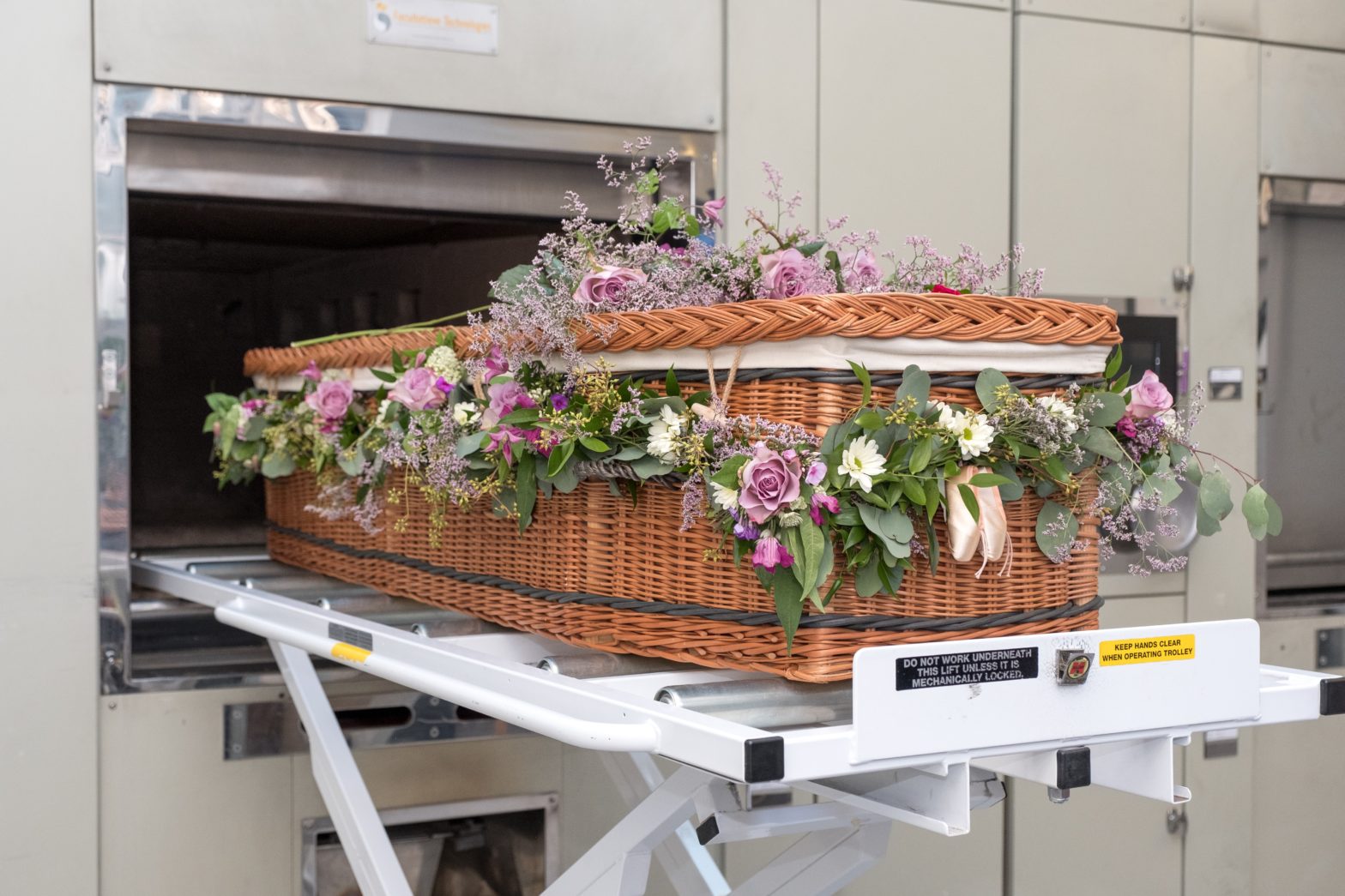
Cremation has clearly lost its stigma even among professing Christians. This acceleration of acceptance has occurred along with our society’s growing secularism and, more significantly, because the Christian communities in America are fractured, largely non-sacramental, and without a coherent theology of the human body in life and in death.
The agnostic and the Baptist will disagree on the existence of the soul, its destination, and the possibility of God’s judgment. But in the 21st century they treat the human body after death in the same ways. I know both agnostic and Evangelical people who have chosen cremation, followed by burying the ashes, keeping the ashes in an urn on a bookcase or mantel, or scattering the ashes in a meaningful place.
The Orthodox Church stands alone among Christian groups in forbidding cremation. Even the Roman Catholic Church has loosened its restrictions on cremation, despite the fact that Catholics have sacraments, venerate relics, and believe in Christ’s real presence in the Eucharist. Because we all have Catholic friends, neighbors, co-workers, or family members, I think it’s worthwhile to take a little detour here to examine the Vatican’s reasoning for this shift.
The Roman Catholic Church and Cremation
It is not surprising that the fragmented Protestant world has embraced a variety of changes in terms of the treatment of the human body in death. But I’m still surprised—call me naive—that the Roman Catholic Church has caved somewhat on this issue.
Back in 1963—a mere 60 years ago, during the year of President John F. Kennedy’s assassination—the Catholic Church officially lifted its ban on cremation, citing reasons such as sanitation, overcrowding in cemeteries, and the expense of traditional burials—even though all of these barriers can be addressed and overcome. Father Kenneth Doyle, writing for the Catholic News Service in February of 2022, explained, “At the same time, though, the church has continued to express a strong preference for the burial or entombment of the deceased, preferably in a Catholic cemetery.”
In allowing cremation, which Christians had rejected for almost two millennia, the Vatican explained, “Cremation of the deceased’s body does not affect his or her soul, nor does it prevent God, in his omnipotence, from raising up the deceased’s body to new life.” In the Congregation for the Doctrine of the Faith, published in 2016, the Vatican also affirmed that “in memory of the death, burial and resurrection of the Lord, the mystery that illumines the Christian meaning of death, burial is above all the most fitting way to express faith and hope in the resurrection of the body.”
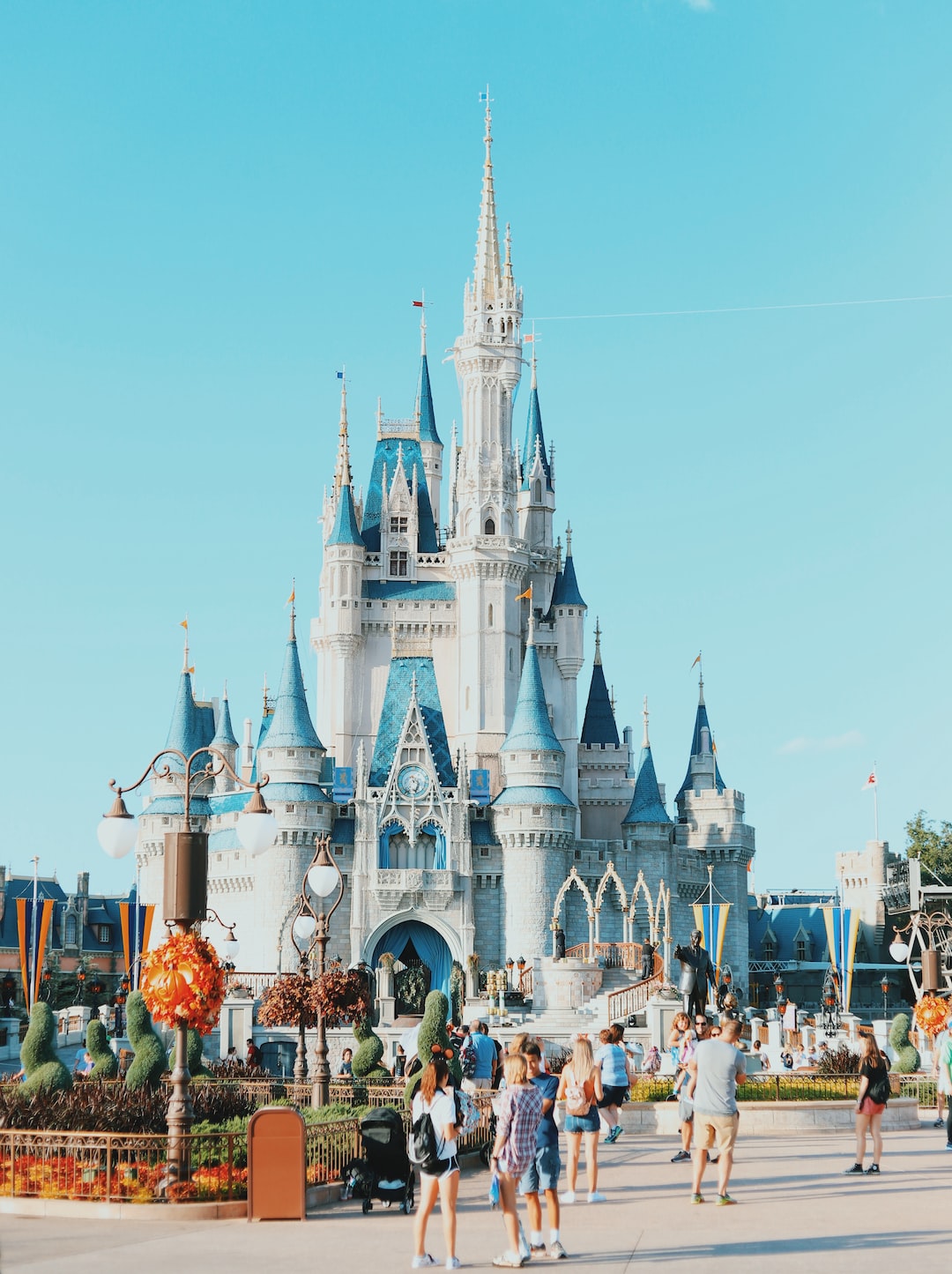
But in the decades since the Vatican allowed cremation, albeit a bit grudgingly, cremated remains in the US have been part of a growth industry in the creative disposal of the human person, often with New Agey practices, such as preserving human ashes in jewelry. The Disney corporation actually trains their workers to spot signs of people trying to scatter ashes—human remains—in their theme parks. Maybe Grandpa Ralph had a fond wish to spend eternity in Tomorrowland, so his descendants do their best to make sure this happens. I am not making this up. A Wall Street Journal report in 2018 stated, “Custodians at the Walt Disney Co. use code words to tackle these problems. ‘HEPA cleanup’ is the code used for such events that require a special vacuum filter designed to suck up very fine particles like ash residue.”
With this and other bizarre treatment of human remains going on, the Vatican clarified its theological thinking in its Congregation for the Doctrine of the Faith document. It announced that Catholics who choose cremation should not have their ashes scattered or kept in urns in the home. Instead, CNN reported,
According to new guidelines from the Vatican’s doctrinal office, cremated remains should be kept in a “sacred place” such as a church cemetery. Ashes should not be divided up between family members, “nor may they be preserved in mementos, pieces of jewelry or other objects.”
As the CNN story rightly notes,
In a sense, the Vatican’s new guidelines on cremation aren’t really about cremation. The church’s true targets are modern societies’ increasingly secular notions about the afterlife the trivialization of dead bodies, making the departed into mementos for the living instead of temples made in the image and likeness of God.
That’s a shockingly perceptive analysis that I wouldn’t usually expect from CNN.
Now, many people would say that the Catholic Church is merely keeping up with the times by allowing cremation. So, the obvious question arises: Is the Orthodox Church merely being reactionary and rigid in her refusal to change?
Nope. The Orthodox Church is being consistent with historic Christian practice, which grew from ancient Jewish practice. I think it’s quite telling that after allowing cremation, the Catholic Church has been forced to do a bit of damage control. Personal choice and self-expression are not reliable safeguards for the continued veneration and respect of the human body.
So, with all this background to orient us, let’s look more deeply at some simple reasons the Orthodox Church always has said no to cremation. For a large part of this content, I am indebted to a YouTube video, “Why Is There No Cremation in Orthodoxy?” from Annunciation Greek Orthodox Church in Rochester, New York. The sermon was from January 22, 2023, and I think the priest is Fr. Angelo Maggos, although he is not identified in the video.
Five Reasons Orthodox Christians Do Not Practice Cremation
1. Cremation is not a part of the Judeo-Christian Tradition.
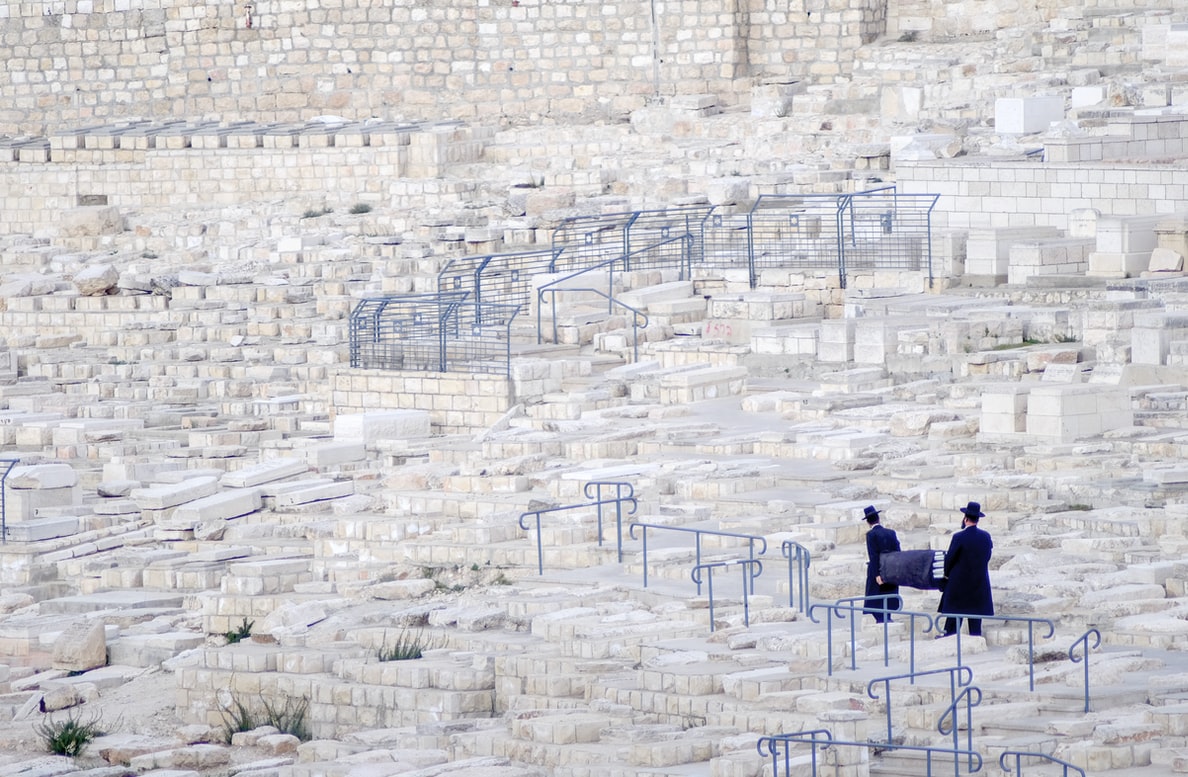
Recently I found a website for green burials that tried to prove that cremation was a viable Old Testament practice. The content was truly weird and was also selling cremation services, so I won’t reference it here. But it mentioned a passage from 2 Kings 23, where Josiah “sent and took the bones out of the tombs and burned them on the altar, and defiled it” (v. 16). The article actually equated this burning of bones with cremation. But this event was not portrayed as an act worthy of emulating; it defiled the altar. Nowhere in Scripture is the burning of a body considered a glorifying or holy act. The website also made a big stretch in citing 1 Corinthians 13:3, where St. Paul writes, “And though I bestow all my goods to feed the poor, and though I give my body to be burned, but have not love, it profits me nothing.” Again, this verse has nothing to do with cremation. Paul is comparing extreme acts of self-sacrifice with love, and love is the greatest.
Ancient Israel practiced prompt burial of their dead, and the apostles came from the Jewish Faith. The tradition of burial of the body continued unbroken into the early Church and on through the centuries, until the late 1800s. (For an interesting summary of the topic, visit the Jewish Virtual Library and read “Death & Bereavement in Judaism: Ancient Burial Practices.” The Orthodox Church remains steadfast in her continuity of this ancient tradition.
2. Our bodies do not belong to us to dispose of as we will.
In the 4th century, St. Makarios the Great of Egypt taught,
God’s tender love is ineffable. He offers Himself to those who with all their faith believe that God can dwell in the human body and make it His glorious abode. God built heaven and earth to be the dwelling place of the human race. But He also built the human body and soul to make them His own abode, so that He might dwell therein and rest there as in a well-kept house.
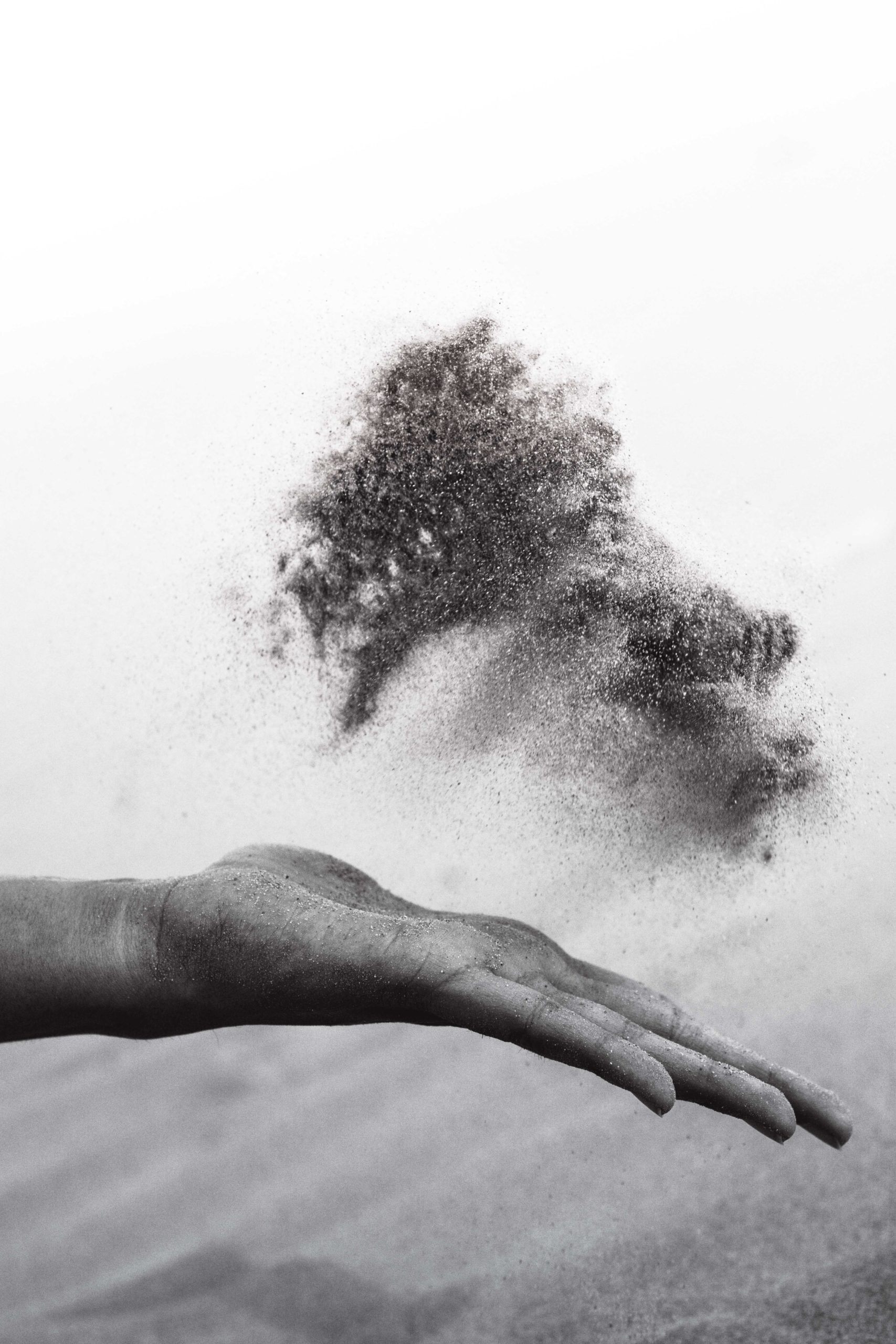
Our bodies, as “temples of the Holy Spirit” (1 Cor. 6:19), are sacred. They are gifts from God, and we return these gifts to Him after death. But as Metropolitan Hierotheos explained, at the Second Coming of Christ, all human beings will be resurrected bodily:
Christianity’s basic teaching is that bodies will be resurrected through the energy of God, the souls will enter their bodies and man will live eternally having both body and soul in a single unity. . . . They will not have corruption, mortality, or diseases, they will have a better form than the body that they had in Paradise after the Creation.
Thus the Church continues to respect the human body in burial. I have Protestant Christian friends who shrug at historic Christian practice and quote Genesis 3:19, “For dust you are, And to dust you shall return.” But this verse has nothing to do with cremation. The decay of the human body is a natural process, which differs from deliberate burning. Can God resurrect the millions of bodies who have returned to the earth, leaving no physical trace? Yes. Can He resurrect someone who died in a horrific car accident? Of course. But out of respect for the body, we don’t hasten the natural process.
3. Cremation does violence to the human body.
I want to be straightforward here without going into too many gruesome details of the process. Most of us have known and loved people who, like my parents, were cremated, and I am not questioning their worth as individuals and certainly not their eternal destiny. We’re just looking at the reality of the process in light of the Orthodox understanding of the human body.
In modern cremation, the body of the deceased, often wrapped in a shroud and placed in a cardboard container, is placed in an extremely hot oven, called a retort, and burned at temperatures upwards of 1,600 degrees. The end result is not simply a pile of ashes, because any ash would be completely incinerated at that temperature. What is left of the body is known as “cremains,” a word coined for “cremated remains,” which are made up of the bits of bone that have survived the heat. The bone fragments are put into a machine called a cremulator and ground into the fine powder that is then given to the family of the deceased in a box or urn.
A cremation takes one to two hours, and high-volume crematories can contain four or five retorts that run day and night, with each of them able to cremate three to five bodies per day. If you want more details, I recommend another Ask a Mortician video, “What Happens to a Body during Cremation?” This particular video describes, step by step, what happens to the body in a retort. It’s not for everyone. But I’ve explained the gist of the process here—enough to understand why the Orthodox Church does not allow cremation as an option.
4. The Orthodox Church requires an open casket during the funeral service.
This is the Church’s standard practice, although the requirement can be waived for pastoral reasons. Last year I attended the Orthodox funeral of a man who died after a long battle with cancer. The casket was closed, probably because he was quite emaciated at the end. But this was an exception to the rule.
When my sister died in 1985, long before cremation overtook burial and also before celebrations of life became a thing, we had a viewing the evening before her funeral, and then at the end of the service her casket was opened. I remember gazing at her body and thinking, “She is no longer here. That’s not her.” Her spirit had clearly departed, and her body looked sort of like Lisa, except the animation, the spark, the life were gone. Talk about remembrance of death! Seeing her body gave my family a sense of finality and closure, and knowing she was with Christ, where there is “no pain, sorrow, and suffering,” was so very important. When I compare that experience to “celebrations of life” where the only evidence of death is a few old photos on display, well . . . there is no comparison.
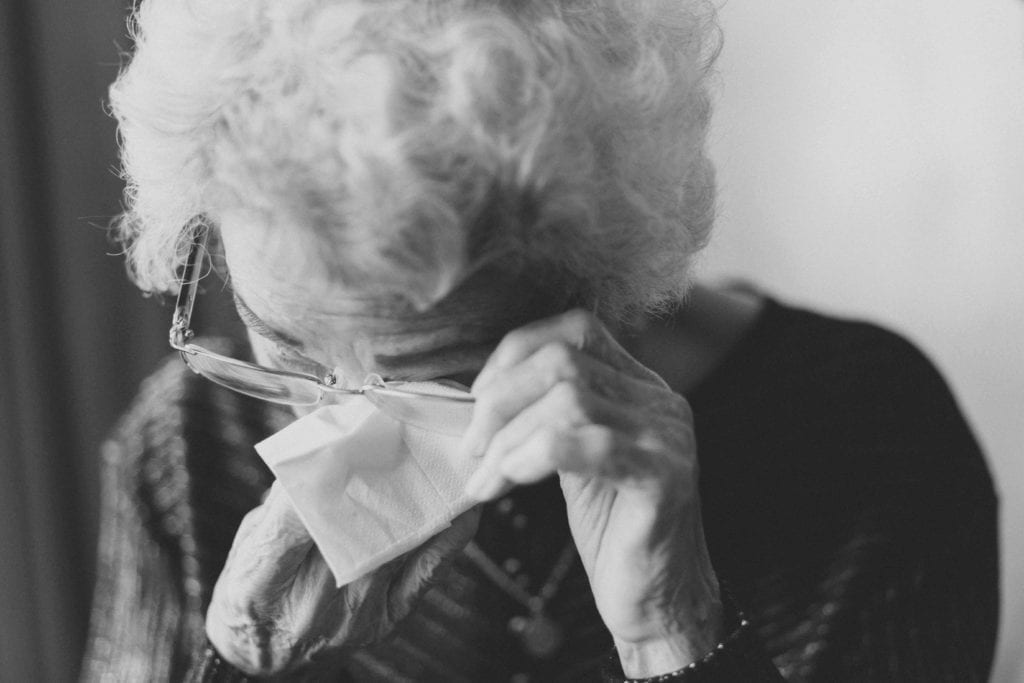
The adult children of an Orthodox parent who has died often want the casket closed, but this desire is a historical anomaly and a reflection of the American fear of death. We should never underestimate the importance of saying a final goodbye to someone we have known and loved. When we come up to the casket after the funeral to see the body of our family member, loved one, or fellow parishioner, when we touch or kiss them, grieve, and cry, the situation is emotionally difficult and is also exactly what we need.
Cremation removes this opportunity for saying goodbye and experiencing communal grief. People may not think much about the absence of their loved one’s body at first, but in their pastoral ministry priests often find that those left behind feel that loss of a final goodbye a year or two later. Also, the viewing is for the participation of the community of faith, to say farewell and to contemplate the meaning of life and death. It is not just a matter of individual choice.
5. Cremation makes impossible the preservation of relics.
I can say with a very high degree of confidence that after I die, my body will not remain incorrupt. And I highly doubt that my bones will emit a beautiful fragrance or that myrrh will stream from them. I labor to be one with Christ, and I am on the path of theosis, but it’s a rocky, stumbling path, and I am a slow learner.
Still, we don’t always know who the “capital-S” saints will be. Many of the saints whose relics became sources of miraculous healings, or whose bodies were lost and later revealed through visions, were not well known during their lives. A few, like St. John Maximovitch of San Francisco, were regarded as saints during their lives because of their holiness, clairvoyance, and ability to heal diseases. But other saints through the centuries lived humble lives in obscurity.
What if, during their lives, the cremation rate had been as high as it is among many Christian groups today? The Church would be greatly impoverished without the riches of the saints’ relics in our midst.
In a bit of interesting timing, while I was putting together this series I read an article in the New York Times about Sister Wilhelmina Lancaster, a Roman Catholic nun from the Abbey of Our Lady of Ephesus, north of Kansas City, Missouri, who died in 2019 at the age of 95. She was buried in a simple wooden coffin, and earlier this year the sisters decided to move her body inside the church. When they opened the coffin, “expecting to find bones that could be easily cleaned and placed in a new box, they instead found what looked and even felt remarkably like Sister Wilhelmina herself. Her face was recognizable, even after years in a damp coffin, and the sisters said that her beloved habit was ‘immaculate.’”
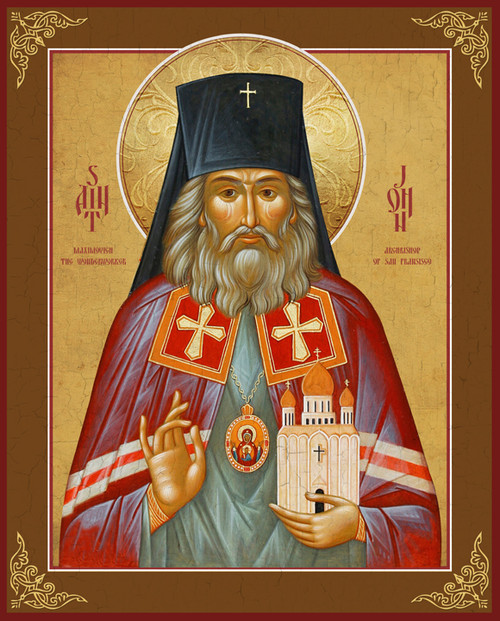
In other words, her relics are incorrupt. Michael O’Neill, who hosts a national radio show called “The Miracle Hunter” on EWTN, said of Sister Wilhelmina, who was Black, “There’s never been an African American incorruptible; there’s never been an American of any sort who’s an incorruptible. So this is big news.”
Ahem. I beg to differ. Regarding incorrupt relics in North America, Mr. O’Neill has clearly never heard of St. John Maximovitch of San Francisco or Archbishop Dmitri of Dallas. But the Great Schism is real and lasting, and he probably doesn’t know much about Orthodox Christianity. The point is, what if Sister Wilhelmina—a beautiful, faithful nun who lived in quiet obscurity—had been cremated? This miracle would never have occurred. All believers are small-s saints on a journey of theosis; we should not presume to know who the capital-s Saints will be. Cremation destroys relics.
Some Final Thoughts about Our Final End
Back to our original question: What is the meaning of the human body? I’ll make a stab at a summary answer.
We are created in God’s image. Orthodox Christians are not Calvinists, who believe that the Fall of man corrupted us to the point of total depravity. God created humanity, “saw everything that He had made, and indeed it was very good” (Gen. 1:31). Our bodies are temples of the Holy Spirit, and we mystically receive the very Body and Blood of Christ Himself into our own bodies in the Eucharist. In our baptism, we die and rise to new life, participating in the death, burial, and Resurrection of Christ. As Dn. Paul Barna noted in A Christian Ending (“Understanding Death: Part One”), God restored us not just to Adam’s state, but higher than before, “a partaker of divine glory.” In Christ’s final victory on the Cross and after His Ascension, “the body will be resurrected, transfigured, and incorrupt, much like our Lord’s glorified body. It will attain the same glorious and incorrupt form as His, and will live united with the soul into eternity.”
These truths are unchanging and provide the framework for the Church’s consistent stance on the presence of the body of the deceased at the funeral service, as well as the reverent burial of the body rather than cremation.
So . . . Now what do we do with all this?
Next time we will consider practical matters: the Orthodox care of the body at the point of death and afterwards as well as the funeral service itself. We will also get real about the difficulties of planning an Orthodox death and burial, at least in America. The Orthodox way, which is the historic Christian way of death, is no longer the norm. This intentional, natural, and deeply Christian way of dying can be reclaimed, but it takes planning and work.
I hope the Church’s way will give you a fresh vision and resurrectional hope, and I hope you can join me.